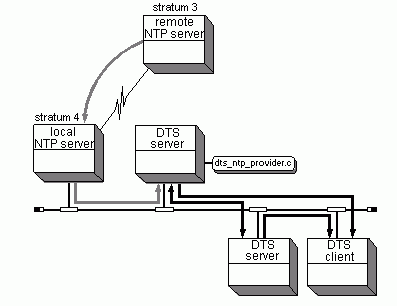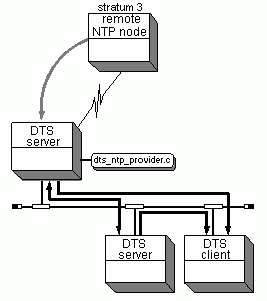Getting the Time from Remote NTP Time Sources
Run the DTS server with the NTP time-provider (dts_ntp_provider.c) on a node with access to an NTP server. Specify the inaccuracy in a manner that is consistent with local NTP experience.
Observe the following advisories:
· Advisory - If links to remote sources are distant, consider having one of the subnetwork nodes run the NTP locally.
· Advisory - Note that the NTP time-provider does not accept time from an NTP node at Stratum 8 or higher.
· Advisory - The NTP node needs to be as close to Stratum 1 as possible.
The following figures both show a DTS server getting the time from a remote NTP time source, which is a Stratum 3 server. However, in the first figure (Scenario 1), all of the advisories in this topic are followed; in the second figure (Scenario 2), the first advisory, running NTP locally on one of the subnetwork nodes if the link to a remote source is distant, is ignored.
Getting the Time from a Remote NTP Time Source (Scenario 1)

Getting the Time from a Remote NTP Time Source (Scenario 2)
